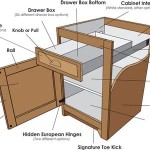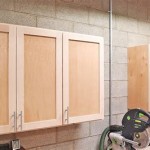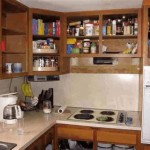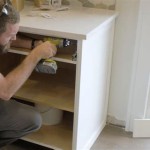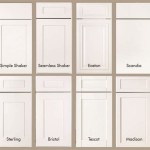Kitchen Cabinet Cornice Mouldings: Elevating Your Kitchen Design
Kitchen cabinet cornice mouldings, also known as crown mouldings, are decorative trim pieces that are installed at the top of kitchen cabinets, adding a touch of elegance and sophistication to the overall design. These mouldings come in a variety of styles, sizes, and materials, offering homeowners endless possibilities to customize their kitchens. Their primary function is to create a smooth transition between the cabinets and the ceiling, concealing any imperfections or gaps and adding a polished, finished look. Beyond their aesthetic appeal, cornice mouldings can also serve practical purposes, such as hiding unsightly wiring or plumbing.
Benefits of Kitchen Cabinet Cornice Mouldings
The use of kitchen cabinet cornice mouldings offers a multitude of benefits that can enhance both the functionality and aesthetics of your kitchen. These benefits include:
1. Enhanced Aesthetics
Cornice mouldings add a touch of elegance and sophistication to any kitchen, elevating the overall design and creating a more polished and finished look. They can be used to draw the eye upwards, making the room feel taller and more spacious. The intricate details and profiles of cornice mouldings add a unique character and personality to the kitchen, complementing various design styles from traditional to modern.
2. Improved Functionality
Beyond their aesthetic appeal, kitchen cabinet cornice mouldings can also serve practical purposes. They can be used to conceal unsightly wiring or plumbing, creating a cleaner and more streamlined look. The mouldings can also be used to cover any gaps or inconsistencies between the cabinets and the ceiling, ensuring a smooth and seamless transition.
3. Versatility in Design
Cornice mouldings come in a wide variety of styles, sizes, and materials, offering homeowners endless possibilities for customization. They can be painted or stained to match the existing cabinetry or create a contrasting accent. Modern designs often feature clean lines and simple profiles, while traditional styles might incorporate ornate carvings and intricate details. This versatility allows homeowners to create a unique and personalized look that reflects their individual taste and style.
Types of Kitchen Cabinet Cornice Mouldings
Kitchen cabinet cornice mouldings are available in a wide range of styles, each offering a distinctive look and feel. Some of the most popular types include:
1. Simple Mouldings
Simple cornice mouldings feature a clean, uncluttered design with minimal detail. They are ideal for modern kitchens and create a sleek and minimalist look. These mouldings often have a straight profile with a slight bevel or rounded edge.
2. Ornate Mouldings
Ornate cornice mouldings are characterized by intricate details and elaborate carvings. They add a touch of grandeur and sophistication to traditional kitchens and complement period properties. These mouldings often feature curves, scrolls, and floral motifs, adding a touch of elegance and visual interest.
3. Composite Mouldings
Composite mouldings are made from a combination of materials, such as wood and polyurethane. They offer the look and feel of traditional wood mouldings at a more affordable price. Composite mouldings are also lightweight and easy to install, making them a popular choice for homeowners.
4. Custom Mouldings
For those seeking a truly unique and personalized look, custom cornice mouldings can be created to meet specific design requirements. These mouldings can be made from a variety of materials, including hardwoods, softwoods, and even metal. They can be crafted into any size, shape, and profile to perfectly complement the kitchen's aesthetic. Custom mouldings allow homeowners to express their individual taste and create a truly one-of-a-kind space.
Choosing the Right Kitchen Cabinet Cornice Mouldings
Choosing the right kitchen cabinet cornice mouldings depends on several factors, including personal preferences, the overall design style of the kitchen, and the budget. Here are some factors to consider:
1. Design Style
The cornice mouldings should complement the overall design style of the kitchen. For example, a traditional kitchen might benefit from ornate mouldings with intricate details, while a modern kitchen might look best with simple, clean-lined mouldings.
2. Cabinet Style
The style of the cabinets themselves should also be considered. For example, shaker cabinets with flat panels might look best with simple mouldings, while ornate cabinets with raised panels could be complemented by more decorative mouldings.
3. Ceiling Height
The height of the ceiling can also play a role in choosing the right cornice mouldings. In a room with high ceilings, large and elaborate mouldings can be used to create a sense of grandeur and sophistication. In a room with low ceilings, smaller and simpler mouldings might be more appropriate to avoid overwhelming the space.
4. Budget
The cost of kitchen cabinet cornice mouldings can vary depending on the material, style, and complexity of the design. Wood mouldings are generally more expensive than composite or plastic mouldings. Custom mouldings are also typically more expensive than pre-made options. By considering the budget, homeowners can choose the right mouldings that offer the desired look and feel without breaking the bank.
Installation of Kitchen Cabinet Cornice Mouldings
Installing kitchen cabinet cornice mouldings can be a relatively simple DIY project, especially for homeowners with basic carpentry skills. Here are some general steps involved in the installation process:
1. Preparation
Before installation, it's crucial to prepare the area by cleaning the cabinets and ceiling. Any imperfections or gaps should be addressed with filler or caulk. Once the surface is smooth and clean, it's ready for the installation process.
2. Measuring and Cutting
The next step is to measure the length of the cabinet run and cut the cornice moulding accordingly. Accurately measuring and cutting the mouldings is crucial for a seamless and professional finish.
3. Attaching the Mouldings
Cornice mouldings are typically attached to the cabinet face or the ceiling using adhesive, nails, or a combination of both. For a secure and long-lasting installation, make sure to use the appropriate fasteners and apply adequate pressure to bond the molding to the surface.
4. Finishing Touches
Once the cornice mouldings are installed, it's time to add the finishing touches. This includes sanding down any rough edges, filling any nail holes, and painting or staining the mouldings to match the existing cabinetry or create a contrasting accent. Once the finishing touches are complete, the kitchen cabinets will have a polished and refined look.
Conclusion
Kitchen cabinet cornice mouldings offer a versatile and cost-effective way to elevate the design and functionality of any kitchen. From enhancing aesthetics to improving functionality, these decorative trim pieces add a touch of elegance and sophistication to the space. By carefully considering design styles, materials, and installation methods, homeowners can choose the right cornice mouldings to create a truly unique and personalized kitchen that reflects their individual taste and style.

Tall Cornice Crown Moulding Decora Cabinetry

Thomasville Embellishments Cornice Tall Crown Moulding

What Is A Kitchen Cornice Everything You Need To Know

White Kitchens Large Crown Molding Google Search Kitchen Cabinet Soffit

Cornice Crown Moulding Embellishments Diamond Cabinetry

10 Types Of Kitchen Cabinet Molding For Your Home

Crown Molding For Kitchen Cabinets Fine Homebuilding

Kitchen Cabinet Cornice Details Cabinets Top Of Old Home Remodel

Solid Oak Cornices Pelmets L Kitchen Wood Cabinets
Cornice Kitchen Dreams Carlow
Related Posts



